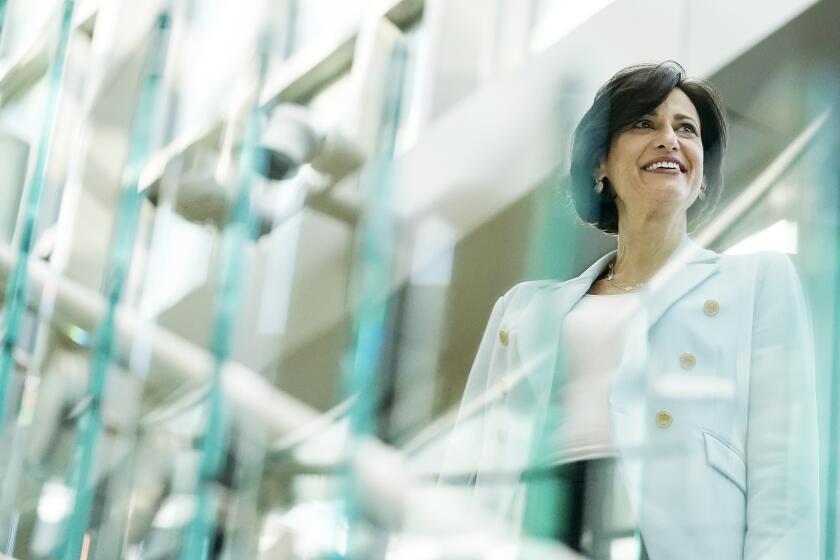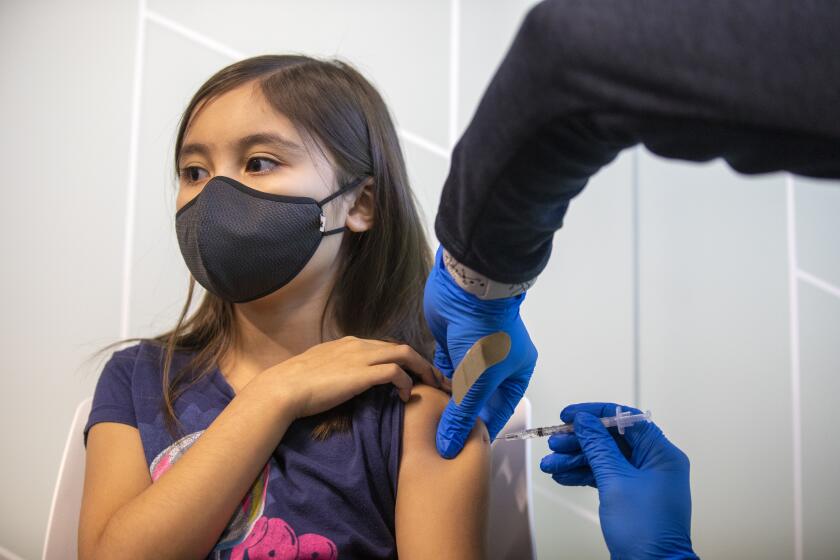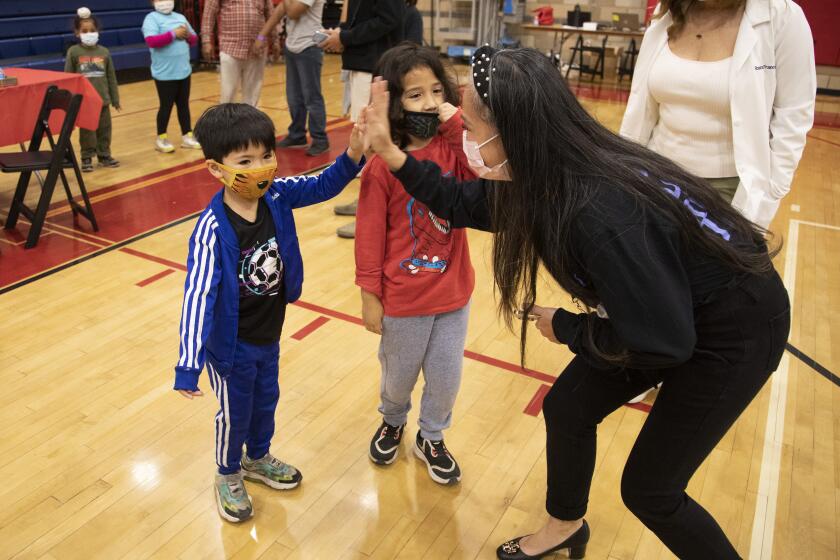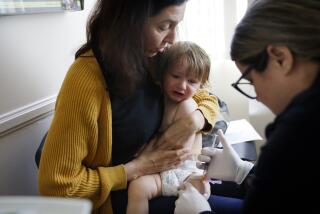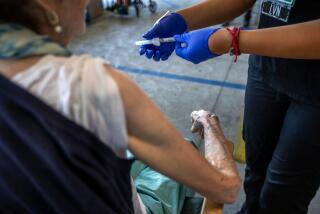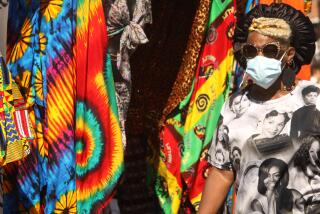A looming COVID risk in California? Schools return with fewer rules, lagging vaccine rates
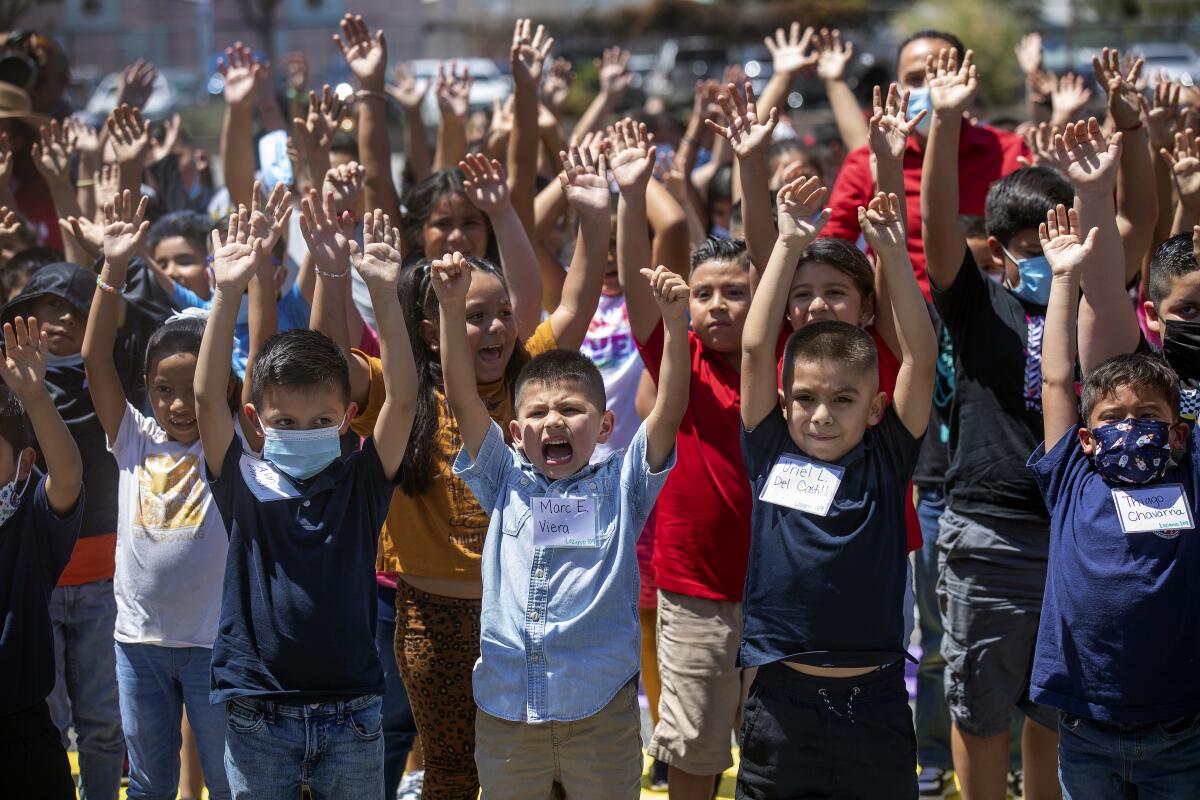
- Share via
California schools reopened for the fall semester with loosened COVID-19 protocols and low vaccination rates among younger students, presenting a new test for the trajectory of the pandemic as some experts expect another rise in cases when winter arrives.
The general move away from expansive masking and testing requirements reflects officials’ confidence in the other tools at schools’ disposal and comes as California is enjoying sustained drops in newly reported infections and coronavirus-positive hospitalizations.
But health experts are watching to see how schools do in the coming weeks, especially given how many youngsters remain unvaccinated.
Only 37% of children ages 5 to 11 have completed their primary vaccination series in California, quite low compared with the 67% vaccination rate for adolescents 12 to 17 and 78% for adults 18 to 49, according to the state Department of Public Health.
In Los Angeles County, 35% of children ages 5 to 11 have completed their primary vaccination series, as have 79% of those ages 12 to 17. By contrast, in Northern California’s most populous county, Santa Clara, 63% of younger children have completed their primary vaccination series and 94% of adolescents have.
Without mandatory masks or regular in-school testing, one of the best ways to protect youngsters against infection is to “get your child vaccinated,” UC San Francisco pediatrician and epidemiologist Dr. George Rutherford said at a campus town hall last week.
In another pandemic school year, parents hope their children progress in academics, mental health and development. Many remain concerned amid more relaxed COVID measures.
But despite months of messaging and availability, vaccine uptake among the youngest school-age children has slowed, and resistance has seemingly hardened. Polling from the Kaiser Family Foundation found that between January and July, the share of parents who said their children 5 to 11 had been vaccinated grew from 33% to 40%. At the same time, the proportion of parents who said they would “definitely not” get their child vaccinated grew from 24% to 37%.
Given that throughout the pandemic children have been far less likely than adults to fall seriously ill with COVID-19, many parents may simply not see a need for the shots. But officials and experts say vaccination doesn’t only help protect the person rolling up his or her sleeve.
“Living through times of high viral transmission is like getting through a bad storm. While it’s very helpful if each of us is able to have good rain gear, when the storm is of long duration, we often need additional help from others,” said Los Angeles County Public Health Director Barbara Ferrer.
Getting vaccinated and boosted, she added during a recent briefing, “is one way to show we care. Not only do vaccines protect us from severe illness, but they also reduce the risk of spread.”
In addition, health officials say that because children are supposed to be healthy and aren’t likely to die of any causes, it’s important to compare the death rate of children from COVID-19 to the pediatric death rate for other reasons for their age group. By that measure, COVID-19 raises alarm bells.
Infectious disease control may be in CDC’s DNA, but the agency’s capabilities have not evolved to keep up with the faster speed and higher stakes of germs in the modern world.
For the 12-month period that ended Oct. 2, COVID-19 was the eighth-leading cause of death among children 5 to 11. A report by the Kaiser Family Foundation published in March said COVID-19 was among the top four causes of death for all age groups 5 and older.
And a study published in June said that the 1,088 COVID-19 deaths that occurred in youths up to age 19 in the U.S. — with 764 occurring in the 12-month period that ended March 31 — made COVID-19 a leading cause of death among that group.
Health officials have pointed out that schoolchildren in California are required to be vaccinated against illnesses for which there are far fewer deaths or cases that cause severe illness such as paralysis. Polio shots, for instance, are required for California schoolchildren, but there haven’t been any polio cases of paralysis in California in many years.
Despite months of outreach and on-the-ground efforts, the COVID-19 vaccination campaign for young children remains stuck in neutral — prompting experts to say more needs to be done to inform parents about the benefits of inoculation.
In Los Angeles County, 13 children have died from COVID-19 since the beginning of the pandemic. Two were younger than 5, four were ages 5 to 11, and seven were adolescents.
U.S. children between the ages of 5 and 11 became eligible for their COVID-19 vaccinations last November and for a booster in May. A study of the Pfizer-BioNTech vaccine for this age group during the first Omicron surge in Singapore found that completing the primary vaccination series was 83% effective against hospitalization.
Pediatricians say the COVID-19 vaccine is safe. “We have not seen serious side effects in kids ages 5–11,” Dr. Rhea Boyd wrote on a website published by the American Academy of Pediatrics. “It is safe and it works.”
COVID-19 vaccinations can also reduce the chance of long-term side effects after experiencing COVID-19, including long COVID. In addition, a COVID-19 diagnosis is associated with a subsequent higher chance of getting diabetes for both adults and children.
Children under age 5 became eligible for COVID-19 vaccines in June. Pfizer on Tuesday said its vaccine was 73% effective at preventing COVID-19 among children ages 6 months to 4 years. Before the shots became available, pediatricians said that the Omicron variant pushed hospitalization rates for children ages 4 and younger to the highest level of the entire pandemic.
Although this latest wave infected many who were fully vaccinated or had had previous brushes with the coronavirus, officials say vaccination still provides some protection against infection. In mid-July, unvaccinated Californians were about seven times more likely to get COVID-19 compared with vaccinated and boosted people, according to the state Department of Public Health.
COVID-19 safety measures will mirror county requirements, a step back from more aggressive protocols on testing, masking and vaccinations.
This back-to-school season is California’s first in the pandemic era without a state-required mask mandate in indoor K-12 classrooms. The Los Angeles Unified School District, which began its school year last week, also has ended weekly coronavirus testing.
Some college campuses that brought back indoor mask mandates in response to the late spring-and-summer Omicron wave, including UCLA and UC Irvine, rescinded those orders last week.
A statewide push to mandate COVID-19 vaccines for K-12 children has also been delayed until next year at the earliest, though such requirements remain in place for students and employees within the UC and Cal State systems.
In its latest guidance for schools, the state health department outlined a number of recommendations — among them ensuring that students and staff stay up to date on vaccinations, optimizing indoor air quality, promoting good hand hygiene and supporting access to testing.
“COVID-19 is here to stay, but we have learned methods and gained tools to decrease its impact on our health and well-being,” officials wrote in that guidance. “California’s schools can manage this disease in sustainable and adaptive manners.”
The department also continues to strongly recommend masking in indoor public settings. However, in places like L.A. County and the San Francisco Bay Area where masking has long been considered routine, the practice has become notably rarer over the course of this year.
The loosening rules come as coronavirus case rates and hospitalizations have been falling for weeks. As of Friday, L.A. County was recording about 3,000 coronavirus cases a day for the prior seven-day period — less than half the summer peak of nearly 6,900 cases per day.
Coronavirus-positive hospitalizations in L.A. County also continue to fall. There were 827 coronavirus-positive patients in the county’s hospitals as of Thursday, down 38% from the summer peak of 1,329.
L.A. County is reporting 96 COVID-19 deaths a week, up 16% from the prior week’s tally of 83.
California is averaging about 8,900 coronavirus cases a day for the seven-day period that ended Thursday, down 16% from the prior week.
As of Thursday, there were 3,143 coronavirus-positive patients in California’s hospitals, down 35% from the summer peak of 4,843, set on July 26.
The state reported 343 COVID-19 deaths for the seven-day period ending Thursday — the highest weekly death tally since the week that ended April 24.
Even with the recent declines, case and hospital metrics remain well above the lull following the initial Omicron wave that struck last fall and winter, and experts say getting schoolchildren vaccinated and adults boosted will be important to prepare for a possible coronavirus rebound later this year.
Health officials are watching the two coronavirus subvariants to determine whether they will eventually become worrisome in the state.
Officials also are hopeful that people will get the newest Omicron-specific version of the vaccine, designed to target subvariants BA.4 and BA.5. The shots could become available in September if given the green light by the U.S. Food and Drug Administration and the Centers for Disease Control and Prevention.
On Monday, Pfizer asked the FDA to authorize its new Omicron COVID-19 booster shot for people ages 12 and older. Moderna made the same request Tuesday for its Omicron booster for adults.
“I think it’s going to help a lot in preventing infections, and I think it’s going to help a lot in keeping people out of the hospital,” Dr. Ashish Jha, the White House COVID-19 response coordinator, said of the new boosters in a forum last week.
Jha said it will be important to get up to date on COVID-19 and flu shots ahead of the winter. Even before the pandemic, the flu itself “really stretches our healthcare system,” Jha said. “Our healthcare system is going to get into serious trouble unless we are very proactive.”
He also urged schools and building owners to improve indoor air quality and added that encouraging people to wear high-quality masks in crowded indoor spaces will keep infections down. Widespread coronavirus testing and anti-COVID drugs also can help.
“If we do all of those things, I am confident we keep every business open, we keep every school open, we don’t have to have hospitals that are overwhelmed and can’t take care of other people and we can get through what might be a tough fall and winter,” Jha said.
More to Read
Sign up for Essential California
The most important California stories and recommendations in your inbox every morning.
You may occasionally receive promotional content from the Los Angeles Times.

